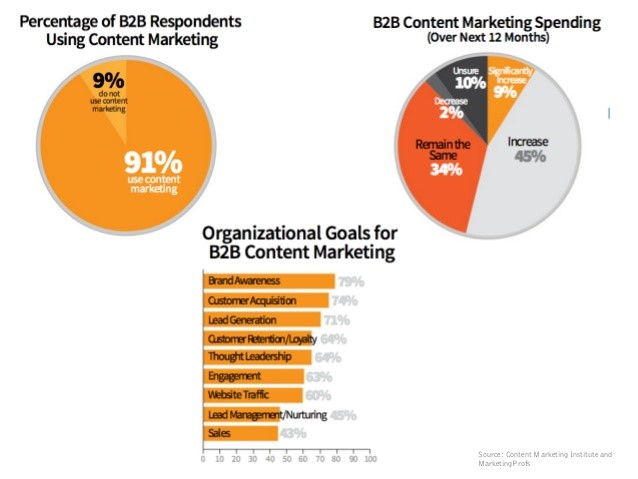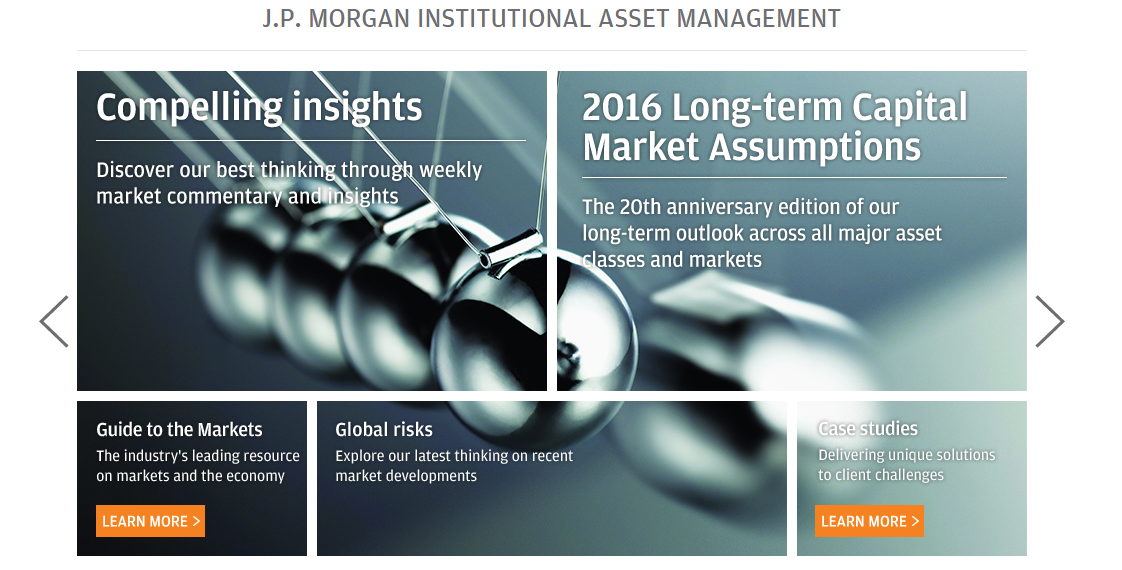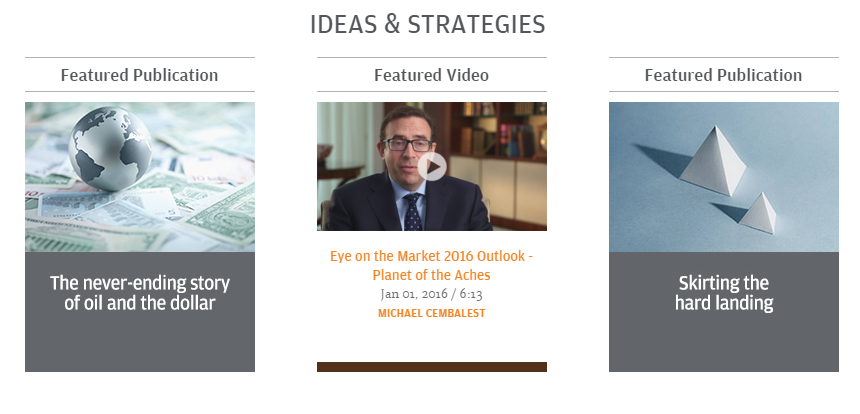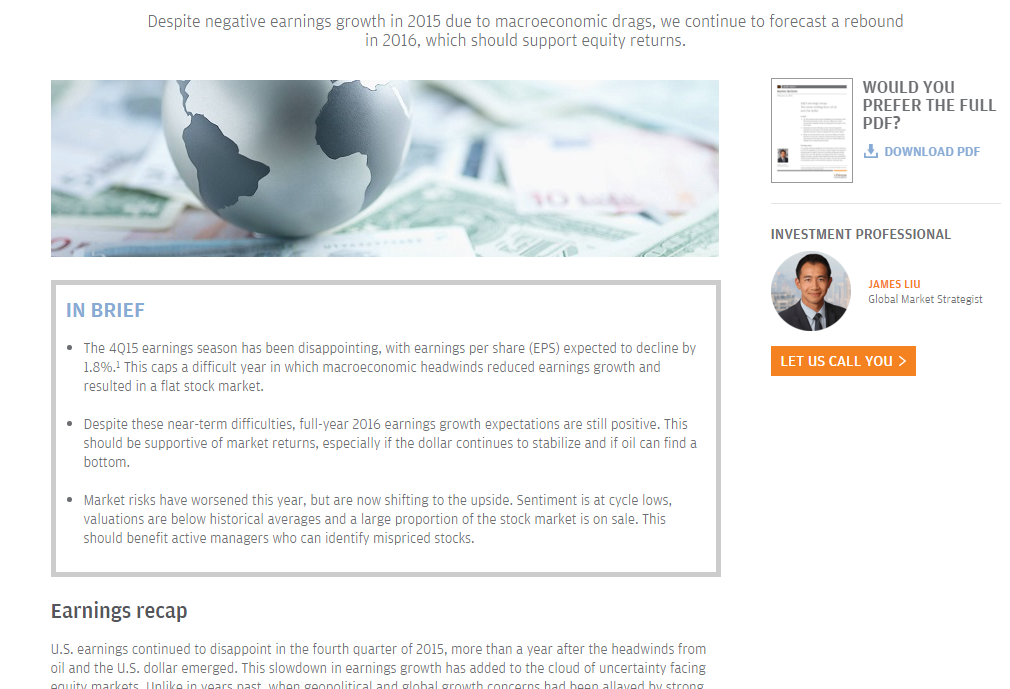
Think It Through: Why You Need Thought Leadership Now
THINK IT THROUGH: WHY YOU NEED THOUGHT LEADERSHIP NOW
You’re thinking about retirement. You pick up a magazine, read some articles, and then call an investor.
You’re looking for ways to better manage your team at work. You get an email about team management with a link to a blog post. It has some great ideas that will work for your situation.
You are researching IT solutions for your company. You find plenty of articles online and quickly find a company that can help.
These are all examples of encountering thought leadership. Whole Foods, Ford, Vanguard, and J.P. Morgan are all companies investing in thought leadership to connect with businesses and customers on a relational level and turn business transactions into an ongoing conversation. Thought leadership builds trust with customers and turns one-off transactions into a lifelong company loyalty.
What is thought leadership, exactly?
A thought leader is, simply, an expert. It can be a single person or an entire business, so long as their expertise is recognized by others in their field. The term dates to the late 1880s, when abolitionist Henry Ward Beecher was described as one of America’s great thought leaders, but it has become popularized in contemporary business jargon over the past 30 years. And there’s an added component: published works.
David Rosenbaum is Editor-in-Chief for The Bloom Group. Since 1998, the company has helped businesses establish themselves as thought leaders with articles published in Harvard Business Review, Forbes.com, Sloan Management Review, and more. The Bloom Group counts consulting firms, Big 4 accounting firms, IT companies, and others among its clients.
“Thought leadership is simply demonstrating expertise in an area by publishing articles about it,” Rosenbaum said in an exclusive interview. Before working with The Bloom Group, Rosenbaum was a senior editor at CFO Magazine and editor-in-chief of Boston Magazine. He broke down the necessary components for true thought leadership into four categories.
Articles need to:
- solve business problems in a new way
- say something novel
- be realistic
- be supported by data and real-world examples
“That’s why it’s so hard,” Rosenbaum said. “It has to be novel, it has to be supported by real world examples, it has to be realistic. It’s not advertising.”
By publishing articles in a specialized field, thought leaders can emerge as experts in that field. By identifying problems and proposing solutions, thought leaders prove themselves to readers, who then seek out these thought leaders for future business.
Why is thought leadership important?
With effective thought leadership, a potential client will read about an innovative idea in an article published by a thought leader. Then, the client will seek out the thought leader’s expertise to solve that problem. That article could be in any field: banking, information technology, or manufacturing.
Rosenbaum shared an example of one of his client’s real-world successes. After a life science company published a series of articles in a specialized field publication, the company’s chief marketing officer reported the articles led to more than a million dollars in additional sales. Establishing itself as a thought leader – illustrating how to solve business problems with novel, realistic ideas, supported by real-world examples – directly impacted the company’s bottom line.
While important in business-to-consumer relationships (B2C), thought leadership is especially critical in business-to-business (B2B) relationships. Thought leadership can lead the way for innovative content marketing, an area many businesses are expanding.
Thought leadership is crucial in today’s business environment. As the business climate transitions from a knowledge-based to a wisdom-based economy, emphasis is placed on trust, transparency, and collaboration, and adding value in every aspect of the client relationship.
Thought leadership yields different rewards at each stage of the process. In early stages, corporations expand their reach, and can expect more inbound inquiries from clients seeking solutions to business problems. After early stages of development, a thought leadership campaign might encourage faster sales cycles and larger deals, expanding the company’s depth. The later stages of thought leadership produce established relationships, with increased customer loyalty and enduring lifetime value.
”
Who can be thought leaders?
Thought leaders can be executives, subject-matter experts (SMEs), or a corporation as a whole. To become a thought leader, qualified individuals or businesses should:
- Define their brand: What is the brand’s enduring idea? How will it differentiate itself from competition? Who is the brand’s target audience?
- Possess legitimate experience and insights in their subject matter.
- Manage a thought leadership profile by identifying: subject-matter expertise, methodology, audience, industry pain points, industry opportunities, ideal media goals.
- Write: Publish a blog or articles in the field.
- Seek out speaking opportunities: Offer to participate in discussion panels or give a keynote address, and provide information the audience needs and can use.
- Blog and use social media: Use blogs, Twitter, Facebook, LinkedIn, or other social media to interact with the community. Post information about publications, speaking engagements, and interviews.
- Build trustworthy relationships with the community: Publish honestly and truthfully.
- Initiate and cultivate media relationships: Get to know journalists and editors and provide them with leads, stories, insights, and quotes.
- Control their online identity: Use social media platforms carefully and consistently to maintain the brand.
- Commit to thought leadership: Making a commitment to generous and transparent knowledge-sharing can set thought leaders apart from the competition, and is another form of corporate social responsibility. Committing to ongoing thought leadership can help businesses stay relevant.
What are some examples of thought leadership?
The financial services firm J.P. Morgan brands its expertise as “Institutional Asset Management Thought Leadership.”
Here’s how the firm meets Rosenbaum’s criteria for thought leadership by 1) saying something novel, 2) giving proof through data and real-world examples, 3) solving business problems in a new way, and 4) being realistic.
1) First, the firm says something novel by inviting readers to delve into its compelling insights and discover the firm’s best thinking on money markets.
White papers, insights, survey reports, market guides, and the retirement-focused Journey Magazine educate and draw in, further establishing the firm as a thought leader.
2) Next, the organization supports its authority within its specialized field with real-world case studies.
3) The firm makes a case for leading the way in solving business problems, like retirement saving.
4) Finally, the company stays realistic, like this report on oil’s relationship to the market.
These examples show how J.P. Morgan has established itself as a thought leader by publishing a unique, informed perspective and authority on industry issues in order to play a guiding role as experienced professionals sharing insights.
The information is useful and relevant, packaged for easy consumption, applicable and useful, and speaks to its audience’s daily reality.
Honest and truthful publication that draws in clients can establish businesses or individuals as thought leaders in their specialized field. With commitment and time, thought leadership can help propel brands to success.
“All big businesses tend to use thought leadership to market their expertise,” said Rosenbaum. “If companies keep spending money on it… it’s working.”
Up next: Thought Leadership How-To
Related Content
- 0 Comment
Subscribe to Newsletter
- Elevate Your Content: How To Use Canva for Eye-Catching Visuals
- These Tools Are Your Key to the Content Campaign Kingdom
- Strategic Content Marketing: Distribution Methods for Maximum Reach
- The Abilities and Limitations of AI in Content Creation
- How to Use AI to Power Up Your Marketing Communication Strategy







